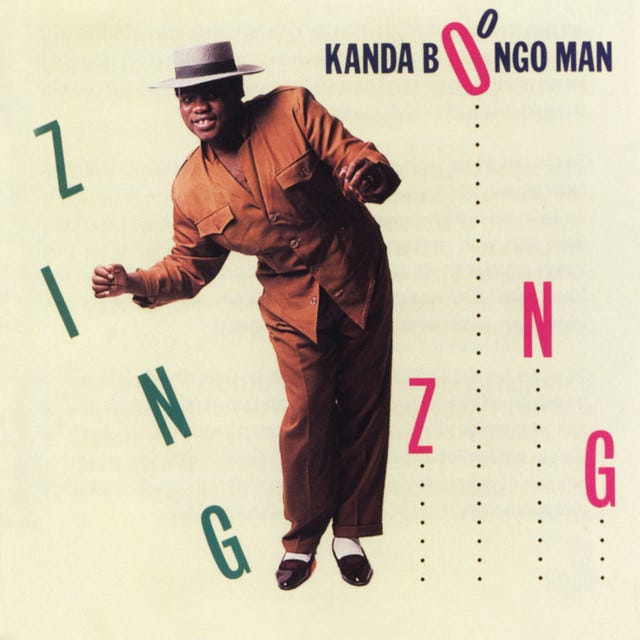Genre of the Day - Kwassa kwassa
Album of the Day - Zing Zong by Kanda Bongo Man (1991)
There are two linguistic certainties: English speakers’ favorite way to poke light fun at the French is with mimicked, over-pronounced renditions of the word croissant, and there’s few things more satisfying than reduplication (repeating the same word twice). Kwassa kwassa does the improbable and combines the two into a whimsically perfect genre name, appreciated in the 2000s indie sphere thanks to Vampire Weekend’s “Cape Cod Kwassa Kwassa.” I must clarify that the word kwassa has no etymological connection to the word croissant. It actually means “I’m working” in Kikongo, the biggest native language in the Democratic Republic of Congo. The phrase “I’m working late, ‘cause I’m a singer” was burned into this summer’s cultural lexicon; one imagines kwassa kwassa musicians would resonate with that lyric twice as much.
Kwassa kwassa marks our return to genres across the African continent revering the guitar and completely transforming its sound over the course of the 20th centuries, as many cultures used traditional lutes and harps as bases for unique styles of playing from Zimbabwe’s jit and sungura to Kenya’s omutibo. The precedent for much of the popularity of guitar-based dance music is in Congo’s melodically rich and danceable soukous, which reinterpreted Cuban rumba as a post-independence chapter in the centuries-long scheme of musical idea exchange between Africa and the Americas—after all, as wassoulou reminds us, much of the banjo and guitar playing styles pioneered by Black Americans can be traced to those of the West African n’goni harp.
Kwassa kwassa also suggests the creative power of interpreting your immediate surroundings through the means of movement and sound. The genre is named for a dance pioneered by one Kinshasa mechanic, the mononymously-monikered Janora. Mechanics aren’t usually dancers, but in a musical scene defined by a band’s ability to stand out via unique dances, Janora rose to the occasion. He concocted the kwassa kwassa dance by imitating a gear shift, though the resulting dance feels much more fluid than that inspirational basis would suggest. Musicians, particularly Kanda Bongo Man, picked up upon the spreading dance by incorporating soukous with a greater frequency of guitar solos rather than only at the end of the song. In the late-’80s boom of interest in so-called ‘world music’, Kanda Bongo Man was able to immortalize kwassa kwassa with the release of his first album distributed in the US proudly bearing the name of the dance.
Ironically, Kwassa Kwassa is not the album we visit today, but his 1991 follow-up Zing Zong boasts a no less exuberant name. The opening track rolls out a bed of call-and-response harmonies sweetening the whisking guitar voicings. Throughout the album, the melodic wealth compels deep listening: in the sparkler melodies of “Isambe,” the high note of the introductory riff is struck with particular emphasis, shining like a falling star. It proves soukous’ ability to make only a couple of guitars sing like an instrumental chorus, effortlessly synchronizing with the relentless rhythm. The hit “Monie” comes out swinging with its all-consuming groove, the bass whirring against the sunny, high-riff guitar, all lines aptly zinging and zonging in the name of maximum dance uplift.





Thanks for the music.
Love Kanda Bongo Man! Haven’t thought about him in years. I worked for a world music company as a video editor in the late 90s and worked on a short documentary about him. Didn’t know the Kwassa Kwassa story so thanks for that and all your genre explorations.